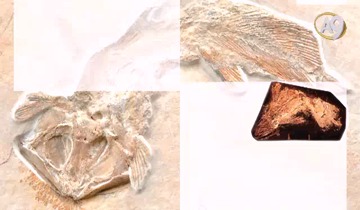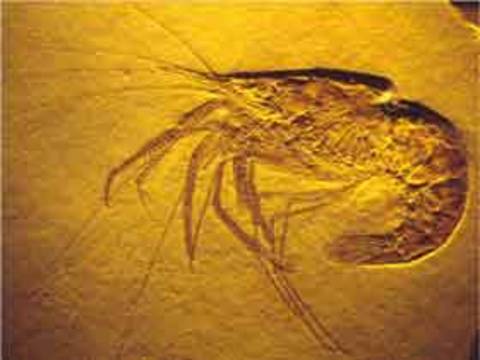Greetings. Today, I am going to introduce you a 93-million-year-old Sapindaceae fossil. Discovered in Lebanon, it is the fossil of the leaf of a Sapindaceae that existed 93 million years ago during the Cretaceous period. How does a leaf become fossilized? Due to circumstances such as being covered in mud, or sudden changes in the soil caused by tsunamis or landslides, the oxygen supply of the leaf is cut off, and then it becomes trapped between the lower layers of the earth. As in the case of many other organic materials, the leaf also goes through a process called carbonization, which in its latter stage would be transformation into a diamond. During this process, its structure remains intact. In some cases, it later might transform into coal or diamond. However, considering these processes as a whole, fossils such as this leaf, which are at the earlier stages of this process, can be unearthed by paleontologists. Overall, these petrified plant forms are no different from the modern Sapindaceae. The fossils of plants, single-cell bacteria, and all other life forms lead us to the same truth; which is, there is no evolutionary process and God created all species in their final and perfect forms.
For example, we discover a sample, which can be a fossil of a limb of a life form that existed some 300 million or 500 million years ago, or as in the case of this Sapindaceae, 93 million years ago. And when we compare this sample with its current form, we see no change at all, thus it has not evolved.
Approximately 100 million life forms have existed to date, and 1 million life forms are in existence today, and none of these life forms has undergone any change or evolution. Plants photosynthesize with the incredible technology they have. For instance, the Sapindaceae leaves that you currently see are responsible for photosynthesis. Besides, this tree produces a fruit called ‘soapnut.’ After the seed is taken out and the fruits undergo a drying process, the soapnut is used in the production of various natural cleaning agents, and in the treatment of certain allergies and skin diseases, and also in certain industrial fields as a blessing of God. There exist many bacteria and plants that photosynthesize in the same manner, and a wide range of life forms that use many different technologies. As for Sapindaceae, the tree brings the energy produced via photosynthesis to our use as cleaning agents. The watermelon plant produces watermelons, and other plants produce many different fruits or vegetables, masha’Allah. Just as God commands in the verse of the Qur’an, through such means, He grants us blessings from many different sources. No fossil displays any sign of transformation or evolution. The only thing they display is the signs of our Lord's art and blessings.







